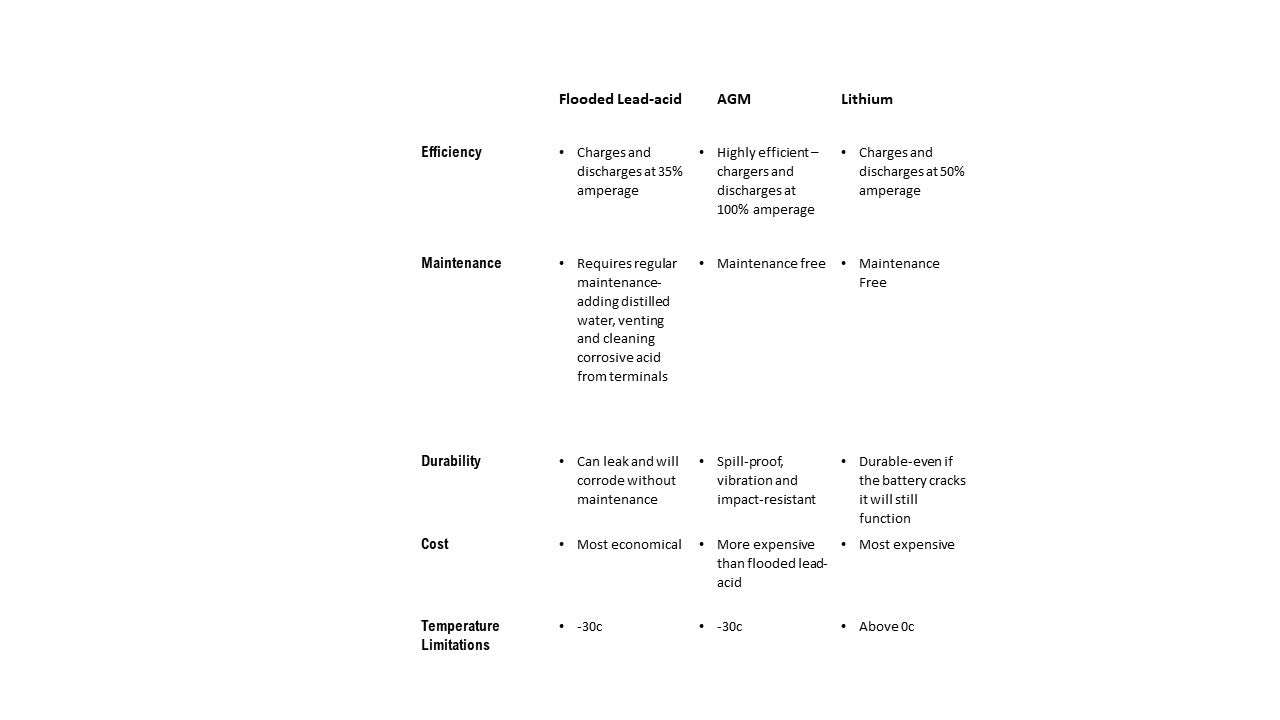Let's Discover
Knowing Your Options
Here are some key things to know and questions to ask yourself or us when understanding the basics about the solar components you will need to Go Off the Grid!
Solar Modules
Solar Modules - Understanding the different types can be complicated but are based on basically some ground fundamental rules to head in the right direction.
1. How many panels do I need? Pending the watts needed
2. Where are you going to set up your array? Importantly will it be mounted on the roof or ground?
3. Once it is decided, you can then determine the size of the panels, whether 100W or 535W, which are the size of the panels. The ground mount allows you to choose the tilt and direction, allowing you to collect the most energy from the sun.
Typically ground mounts allow for larger panels than on a roof.

Batteries/Energy Storage
Batteries (Energy Storage) - There are two main options for choosing which type of batteries to select. There are pros and cons to all the different types. Here are some quick points to reference when choosing.
How much does a battery each hold?
1. How many batteries do I need? Determined from the amount of energy you need to harness.
2. What is my budget? There can be quite a range in regards to cost. That is not to say the most expensive battery is better. Pending on your time invested up front, you can set up to have the right quality and economical system.
3. Where are you going to set up your battery system? Pending on the batteries you chose, there are different requirements for storage.
Lithium-ion batteries can not be stored inside dwelling units without preapproval ESA (Electrical Safety Authority)
These key steps will assist you in heading in the right direction in determining the right equipment needed for your system.

Inverters/Chargers
Inverters/Chargers - Inverters take the energy you harvest from the sun and turn it into A/C power to run the electrical loads in your home.
1. The size of your inverter is determined by how much energy your home consumes. The size is determined based on the evaluation tool found on the website.
2. What is a charger? Most inverters have a built-in charger that can take a power source such as a gas generator and use the energy to charge your batteries or run large loads.
All Inverters we sell have a built-in charger.
3. What else should I think about when deciding? It is important to size your inverter for the peak demand your electrical system will draw. Thinking ahead and planning for future use. In other words, if you want to expand your solar intake, ensure you have an inverter that can handle the peak demand of your electrical system with the draw.
Our Solutions
DIYCustom Solutions
Contact usStay up-to-date
The Latest Ontario Solar Energy News

Gravenhurst Cottage Solar Panels & Backup Power

Pointe au Baril Backup Power & Net Metering



